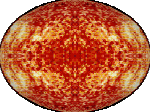 NEW ENGLISH ALPHABET - 18 VOWELS |
 This is the new symbol for the sound of long "A" in words like "ate", "bait", "straight", etc. Since the sounds of "M", "N" and "ng" are now depicted as triangular shapes symbolizing the passage of air and sound through the nose, it's no longer appropriate for the sound of of letter "A" to also be represented by a triangle. So, an open mouth shifted on its edge, which also looks like a quarter moon, is given a little horizontal dash to indicate the long pronunciation. Thus, the three sounds of "A" don't need to be combined with any other vowels because those other vowels have their own unique symbols for each aspect of their pronunciation. From now on, each letter is sufficient unto itself to express its sound, according to this new principle of one symbol for one sound. |
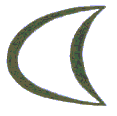 like "bat", "match", "thatch", "track", etc. The wider symbol indicates the mouth widening slightly to speak the sound. |
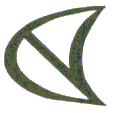 in words like "air", "bare", "swear", "trash", etc. |
 like like "Easter", "beet", "heat", "deplete", etc. - simpler to write than standard letter "E", now all in one continuous line. It's a pictograph of the mouth shifted on its edge, like the previous new images for the sounds of "A". |
 like "Ecuador", "set", "mend", "tread", etc. The top is curved downward to indicate the short pronunciation. |
 words like "Youngstown", "youth", "lawyer", "funny", etc. Long "E" spoken quickly is what letter "Y" actually sounds like, so we need a new letter that resembles the new symbol for the sound of "E", yet is different too. So, by removing the right vertical column, the top an bottom horizontal bars and shifting one of them to a middle horizontal postion, we get a symbol that slightly resembles both "E" and "Y". Thus, the standard letter "Y" is replaced by a new letter showing its phonetic relationship to the letter that sounds like it, and NOT used for the sound of long "i" in "bye" and "rye". |
 in words like "Ike", "ice", "spice", "fight", etc. It's one of the exceptions that prove the rule. The actual sound is a short O followed by a long E, yet to draw such a complex symbol that couldn't relate to its partner, short I,i, would be confusing - much simpler to keep the standard I,i, except does it really need top and bottom dashes or a dot? No, so let's get rid of them, because now that letter L will always have a right-extending bottom dash, capital I, small l and number 1 will never be mixed up again! |
|
words like "Ithica", "bit", "thrift", "intermission", etc., the short pronunciation indicated by a little cup at the top but facing right so as not to be mistaken for the number 7. |
|
like "Oklahoma", "bowl", "boat", "note", etc, the inside dash indicating the long pronunciation. |
|
words like "Ontario", "top", "shock", "odd", etc, the curve of the O itself indicating the short pronunciation. |
|
"Auburn", "ball", "thought", "taught", "law", etc, the right-leaning slash indicating the broader sound. |
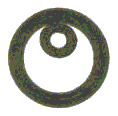 "cow," "out", "couch", "drought", etc. Actually, "ou" is somewhere between "a" as in "air" and "o" as in "top" then followed by a tiny "o" for the sound of "w"; so I tried to attach it to the new symbol for "A", but it didn't work - too complex and awkward. So, even though it's not absolutely perfect, the nearest I can get to indicating that sound is to combine short "O" and tiny "o" = "ou", approximately. |
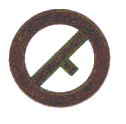 words like "boy", "toil", "foyer", etc. As you can see, the new symbol for the sound of Y appears inside the O joining the sounds of O as in "bought" and Y, as in "funny". |
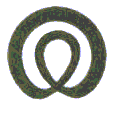 "book", "put", "could", etc., the two OOs combined with one inside the other written as a curlicue. |
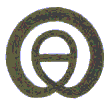 "oops", "cool", "rule", "strew", etc., a dash inside the curlicue indicating the long pronunciation. |
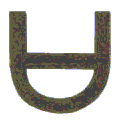 like "use", "view", "new", "amuse", etc, the dash inside the U indicating the long pronunciation. |
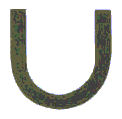 words like "Umpqua", "hut", "abrupt", etc - the curve of the U itself indicating the short pronunciation. |
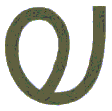 known as "schwa", like the a in "about", the second i in "indeterminate", etc. It's half way between the sounds of standard short O and short U, so both letters are combined in one symbol. |
|
I'm fairly sure this work is complete, but even so, changes are still possible. See two sentences using this new alphabet at the - Hand-drawn Summary Alphabet Introduction Back to Contents Angelfire Homepages |